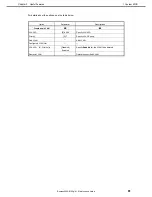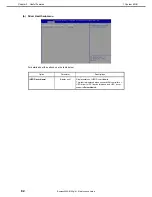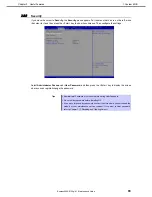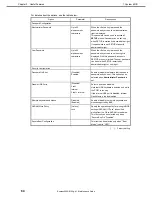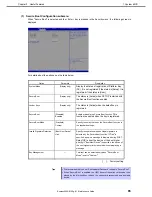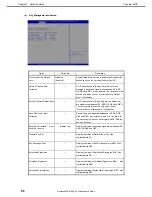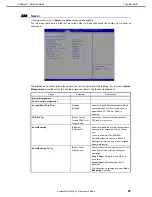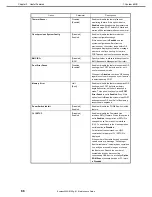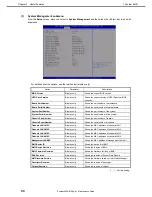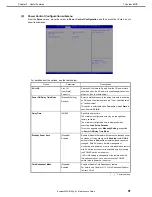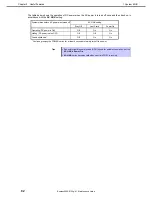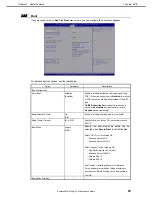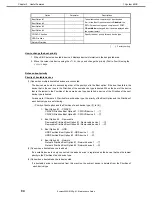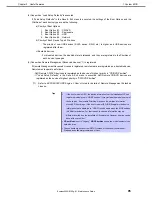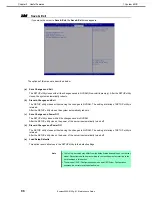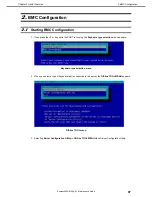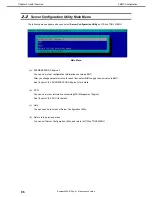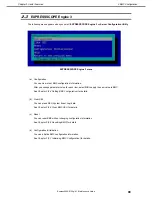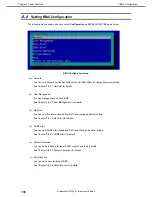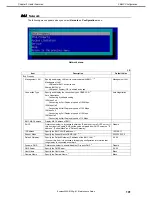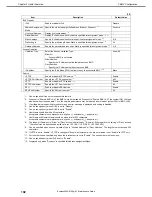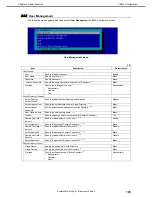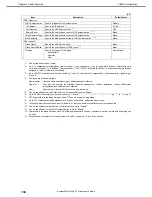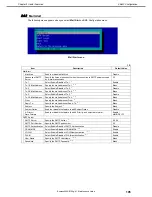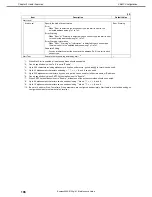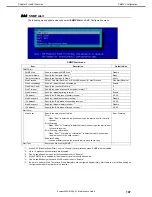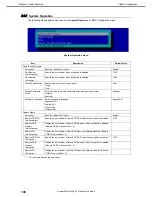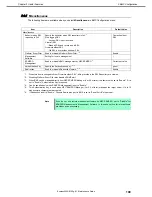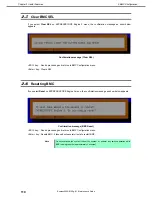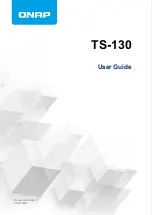
1. System BIOS
Express5800/E120g-M Maintenance Guide
95
Chapter 2 Useful Features
(4) Case when “Load Setup Defaults” is executed
If "Load Setup Defaults" in the Save & Exit menu is executed, the settings of the Boot Options and the
Priorities of each device type are as the following:
a) Priority of Boot Options
1. Boot Option #1 : CD/DVD
2. Boot Option #2 : Removable
3. Boot Option #3 : HDD
4. Boot Option #4 : Network
b) Priority of Each Device Type’s Priorities
- The priority of non-USB devices (SATA device, RAID, etc.) is higher, and USB devices are
registered after them.
c) Bootable devices
- For disabled devices, the disabled state is released, and they are registered in the Priorities of
each device type again.
(5) Case when Remote Management Advanced License (*1) is registered
If Remote Management Advanced License is registered, remote media are registered as a bootable device.
Remote media operate as follows:
- AMI Remote CD/DVD devices are registered as the device of highest priority in "CD/DVD Priorities".
- If "Load Setup Defaults" in the Save & Exit menu is executed, AMI Remote CD/DVD devices are
registered as the device of highest priority in "CD/DVD Priorities".
(*1) Refer
to
EXPRESSSCOPE Engine 3 User's Guide
for details of Remote Management Extended
License.
Tips
•
If the boot mode is UEFI, the device information that the installation OS has
registered is displayed in "HDD Priorities". It may include the model number of
the hard disk. “Removable Priorities” may have the partition information
storing EFI boot image. If the boot mode is UEFI, BIOS registers the device
information that is displayed in "HDD Priorities" again when the BIOS settings
(NVRAM) are cleared. For that reason, the device information may be
different from the one the installation OS registered. However, booting can be
done with no problem.
•
If
Boot Mode
is set to "Legacy",
HDD Priorities
shows the model number of the
hard disk drive.
•
Change bootable devices from SETUP instead of the bcdedit command of
Windows and efibootmgr command of Linux.

